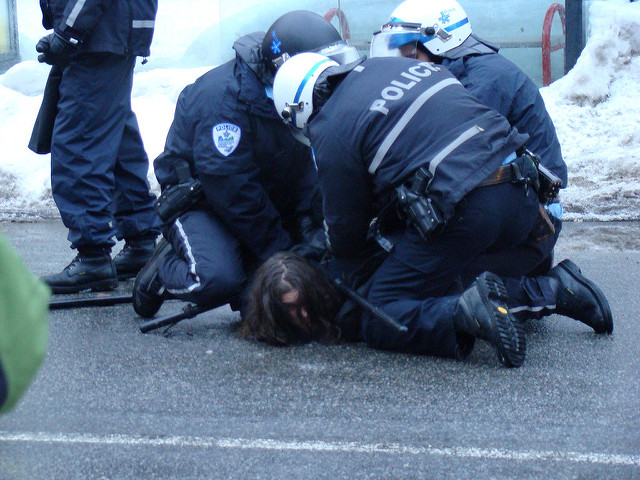
Police Lack Training to Deal with Mentally Ill People
On March 4, 2016, Devon LaFleur, a 30-year-old struggling with bipolar disorder, went missing. His father contacted law enforcement to notify police of his son’s mental illness and tendency towards violence. After learning that LaFleur had allegedly robbed a bank and was on the run, Toronto police tracked down and fatally shot the young man during a confrontation.
In many instances where mental illness is concerned, police officers respond too quickly with force, sometimes without probable cause. In an analysis conducted by the Washington Post, American officers shot 124 people who showed some sign of mental or emotional distress in 2015.
The Post explains that, for the majority of these crimes, the police were not called for reports of criminal activity. As in LaFleur’s case, police were contacted by “relatives, neighbors or other bystanders worried that a mentally fragile person was behaving erratically.”
An article by psychiatry professor Richard Lamb and colleagues at the University of Southern California reports that police officers are authorized to transport individuals with mental illness for psychiatric evaluation when there is reason to believe that they pose a danger or threat. But the researchers also state that this responsibility turns officers into ‘street-corner psychiatrists’ without giving them the training they need to make on-the-spot decisions about mentally ill people.

An article published in Criminal Justice Review by Teresa LaGrange shows that “higher educated police officers recognize a broader range of disorders”, and they are more likely to “view the situation as requiring a professional intervention”.
However, LaGrange also recognizes that, instead of teaching practical skills like learning how to identify individuals with mental-health conditions, many educational workshops only consist of general descriptions about psychological terms and concepts.
Police officers need to know how to handle individuals who display different types of mental illnesses. The Washington Post analysis states that the most extreme cases of mentally ill people causing a disturbance were schizophrenic individuals, and those who displayed suicidal tendencies, or had some form of post-traumatic stress disorder (PTSD).
In some U.S. states, crisis intervention team training (CIT) is being implemented to help officers identify mental illness and determine the best course of action.

CIT consists of a 40-hour training program for police forces that educates officers on mental-health issues and medications, and teaches about mental-health services in the local community. CIT also teaches methods that help de-escalate heated situations by encouraging officers to allow vulnerable individuals to vent their frustrations—methods that could have been useful in LaFleur’s case to reduce the risk of violence from both the police and offender.
So far, this program has been considered effective by the police departments using it.
Major Sam Cochran of the Memphis police department, a retired officer and a coordinator of the CIT program, emphasizes that law enforcement should partner with local mental-health agencies:
“If communities give attention only to law enforcement, you will fail as a training program. You cannot separate the two.”
Although the task of identifying mentally ill individuals can be daunting, these training programs are a step toward preventing injustices for individuals like LaFleur. Providing officers with appropriate training not only improves the ability to handle job stress, but may also provide the mentally ill with a chance to receive treatment.
– Afifa Mahboob, Contributing Writer
Image Credits
Feature: Free Images at Pixabay
First: Yannick Gingras at flickr, Creative Commons
Second: Alex Proimos at flickr, Creative Commons



